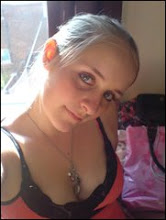Editing: e.g. a person is about to walk through a door to enter a building *- Cut -* then the next shot is the same person walking down the corridor.
Time: clock turning, calender flicking over, seasons changing. e.g. seeing the trees grow leaves and blossom and then wither away. Aspects of mise-en-scene (clothing). Flashbacks so being able to take you back into a moment in time.
Transitions:
Cheat Cut:a cut which purports to show continuous time and space from shot to shot.
Cross cutting (parallel editing):
Editing that alternates shots of two or more lines of action occurring in different places, usually simultaneously. The two actions are therefore linked, associating the characters from both lines of action.
Cut in - cut away:
An instantaneous shift from a distant framing to a closer view of some portion fo the same space, and vice versa.
Dissolve:
A transition between two shots during which the first image gradually disappears while the second image gradually appears; for a moment the two images blend in superimposition.
Iris Cut:
A round, moving mask that can close down to end a scene (iris-out) or emphasize a detail, or it can open to begin a scene (iris-in) or to reveal more space around a detail.
Jump Cut:
missing a shot maybe walking along 'jumps' then walking along the same parth but just a little bit further ahead.
Establishing Shot:
A shot, usually involving a distant framing, that shows the spatial relations among the important figures, objects, and setting in a scene. Usually, the first few shots in a scene are establishing shots, as they introduces us to a location and the space relationships inside it.
Shot/Reverse Shot:
Generally this shot is used to show a characters reaction. Where they look at an object and then you see the character like the object is looking at them. Then reverse it.
Wipe:
A transition betwen shots in which a line passes across the screen, eliminating the first shot as it goes and replacing it with the next one.
Superimposition:
The exposure of more than one image on the same film strip. Unlike a dissolve, a superimposition does not signify a transition from one scene to another. The technique was often used to allow the same performer to appear simultaneously as two characters on the screen to express subjective or intoxicated vision (The Last Laugh), or simply to introduce a narrative element from another part of the diegetic world into the scene.
Eyeline match:
This shot is where you see the character looking at something, then you see the same thing through their eyes. The same eye level.
Match on action:
A cut which splices two different views of the same action together at the same moment in the movement, making it seem to continue uninterrupted.
Rhythm:
The perceived rate and regularity of sounds, series of shots, and movements within the shots. Rhythmic factors include beat (or pulse), accent (or stress), and tempo (or pace).
Montage:
A mixture of different images but of the same meaning. For example. if you wanted to express religion you would show close up of crosses, crosses on necklaces, churches, jesus, allah...etc.
Subscribe to:
Post Comments (Atom)




No comments:
Post a Comment